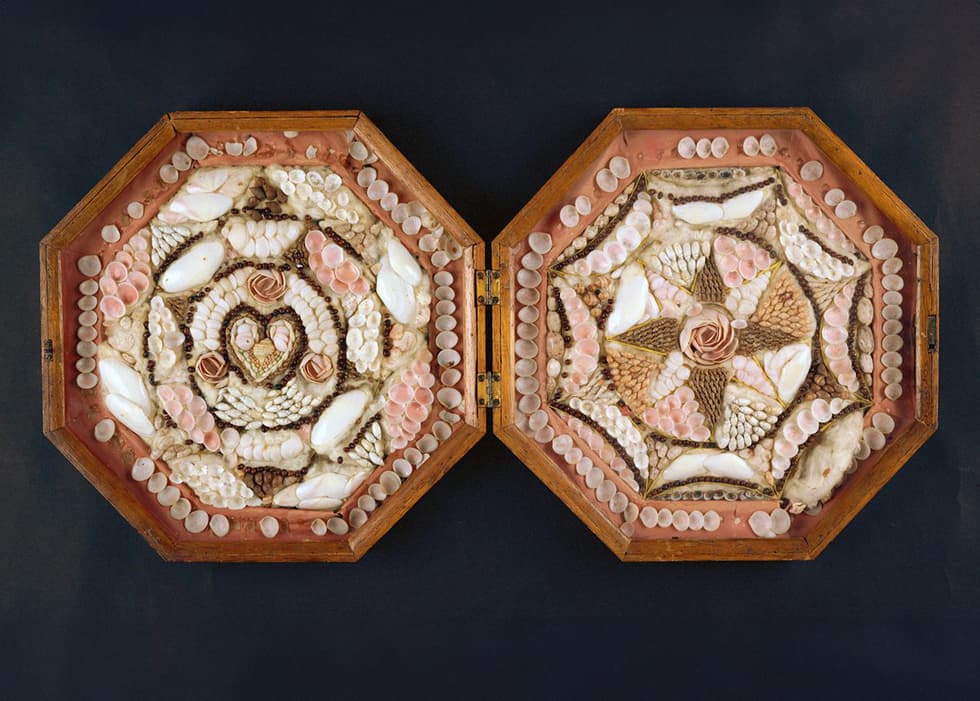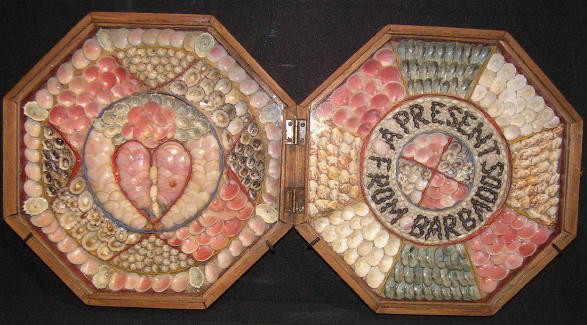With Love From Across The Sea: Sailors' Valentines
February 9, 2024
Tweet
By Taylor Bounds, Division of Marketing and Communications
A 19th century sailor needing a gift for his loved one across the sea could find the perfect option in Barbados: a sailor's valentine. The small island was a frequent port of call for American and English ships and was a major trading post of the time, as the Caribbean's easternmost island. Like modern-day souvenir shops on Galveston's Seawall Boulevard, vendors sold the valentines to sailors passing through the bustling commercial hub.
Containing intricate, detailed designs made from shells, the valentines often featured motifs of hearts, flowers or nautical scenes, but despite the name, have no specific link to Valentine's Day. Though historians initially thought that sailors made the valentines during lonely months at sea, pining for their loves back home, most valentines were actually made by local artisans in Barbados, where the form of shellcraft originated, to be sold to sailors and other travelers to the port.
"The vast majority of evidence indicates that local Barbadian women made these mementos, but beyond that, the resources needed for the valentines would be inaccessible to a sailor at sea," said Kristin Josvoll '10, '12, a maritime studies professor in the Department of Liberal Studies who teaches courses including maritime history and folklore, material culture and museum studies. "During the age of sail, wood was a valuable resource while underway, needed for repairs, so it's very unlikely that they would use wood for handicrafts. This is why, for example, whalers made scrimshaw by carving in the bones and teeth leftover from harvesting whales.”
"Though there are a small handful of valentines that sailors made to pass the time while docked in Barbados, they are largely the handiwork of the local ladies, made with the intention to sell for profit," Josvoll continued.

In Barbados, the wood typically used to make the hinged, octagonal compass-shaped box that displayed the designs was readily available and the shells were abundant. Though there are about 100,000 different kinds of seashells worldwide, less than three dozen, all local to Barbados, are featured in sailors' valentines, said Josvoll. Crafting these boxes was painstakingly detailed; the artisans carefully affixed the shells, often bearing a sweet message of affection, to newspaper or cotton batting using glue made from boiled-down fish scales or hide glue. At the end of the process, a glass pane was added to the folding frames to protect the design.
Sailors' valentines were especially popular with Victorian women, who, according to Josvoll, might have displayed the gifts from their ocean-going beaus in their cabinets of curiosities. "Conchylomania," a seashell-collecting trend from the era, likely fueled the valentines' popularity. Many of them would be displayed in these cabinets alongside other, albeit less romantic artifacts, such as animal specimens, minerals or even mummified human remains.
The cherished gifts are now highly collectable, with some worth upwards of tens of thousands of dollars. The craft is regaining popularity, though modern-day versions typically use contemporary materials from around the world. New or old, the keepsakes are beautiful links to the past, and just as centuries-old sailors' valentines held a unique place in their recipients' hearts, they also hold a unique place in maritime history.
###
Media contact:Taylor Bounds
bounds@tamu.edu
More:
Read more about Arts & Humanities
Read more about Liberal Studies
Read more about Student Life